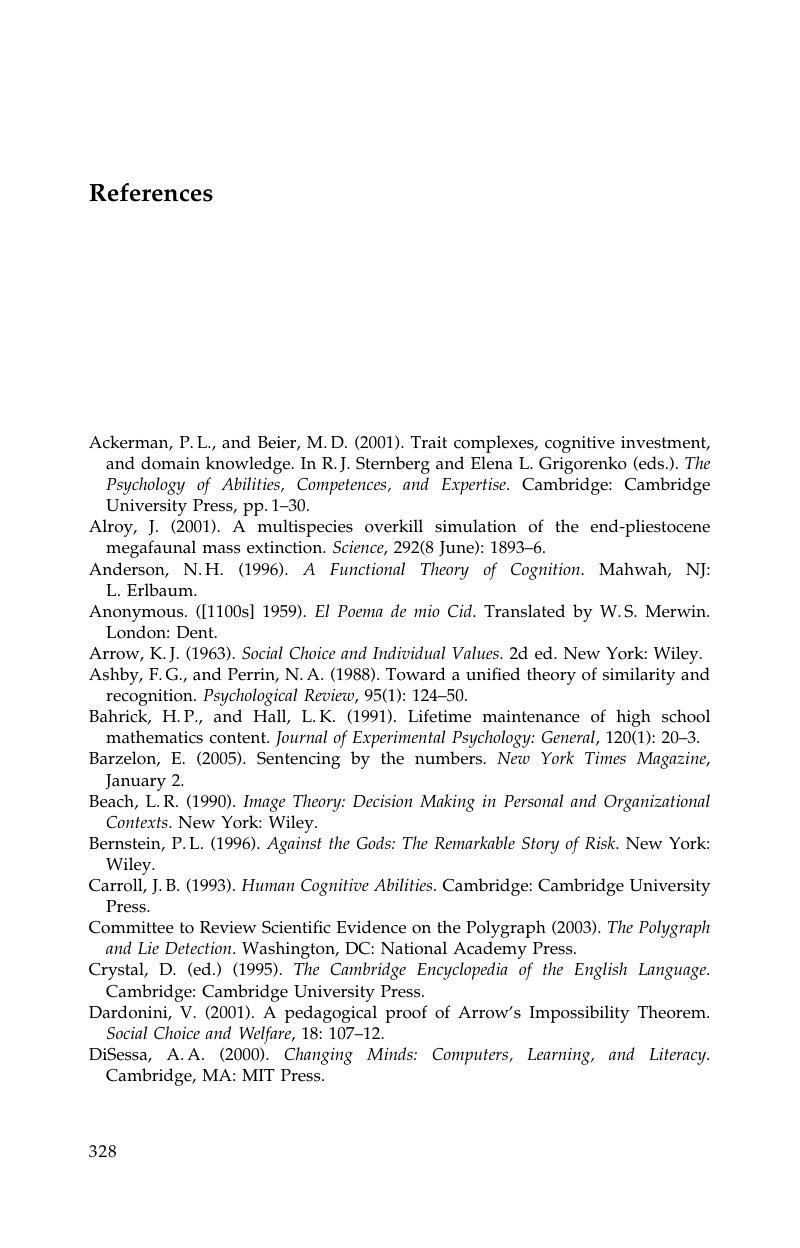Book contents
- Frontmatter
- Contents
- Preface
- 1 INTRODUCTION
- 2 APPLYING PROBABILITY THEORY TO PROBLEMS IN SOCIOLOGY AND PSYCHOLOGY
- 3 FROM PHYSICS TO PERCEPTION
- 4 WHEN SYSTEMS EVOLVE OVER TIME
- 5 NON-LINEAR AND CHAOTIC SYSTEMS
- 6 DEFINING RATIONALITY
- 7 HOW TO EVALUATE EVIDENCE
- 8 MULTIDIMENSIONAL SCALING
- 9 THE MATHEMATICAL MODELS BEHIND PSYCHOLOGICAL TESTING
- 10 HOW TO KNOW YOU ASKED A GOOD QUESTION
- 11 THE CONSTRUCTION OF COMPLEXITY
- 12 CONNECTIONISM
- 13 L'ENVOI
- References
- Index of Names
- Index of Subjects
- References
References
Published online by Cambridge University Press: 04 May 2010
- Frontmatter
- Contents
- Preface
- 1 INTRODUCTION
- 2 APPLYING PROBABILITY THEORY TO PROBLEMS IN SOCIOLOGY AND PSYCHOLOGY
- 3 FROM PHYSICS TO PERCEPTION
- 4 WHEN SYSTEMS EVOLVE OVER TIME
- 5 NON-LINEAR AND CHAOTIC SYSTEMS
- 6 DEFINING RATIONALITY
- 7 HOW TO EVALUATE EVIDENCE
- 8 MULTIDIMENSIONAL SCALING
- 9 THE MATHEMATICAL MODELS BEHIND PSYCHOLOGICAL TESTING
- 10 HOW TO KNOW YOU ASKED A GOOD QUESTION
- 11 THE CONSTRUCTION OF COMPLEXITY
- 12 CONNECTIONISM
- 13 L'ENVOI
- References
- Index of Names
- Index of Subjects
- References
Summary

- Type
- Chapter
- Information
- The Mathematics of Behavior , pp. 328 - 332Publisher: Cambridge University PressPrint publication year: 2006



